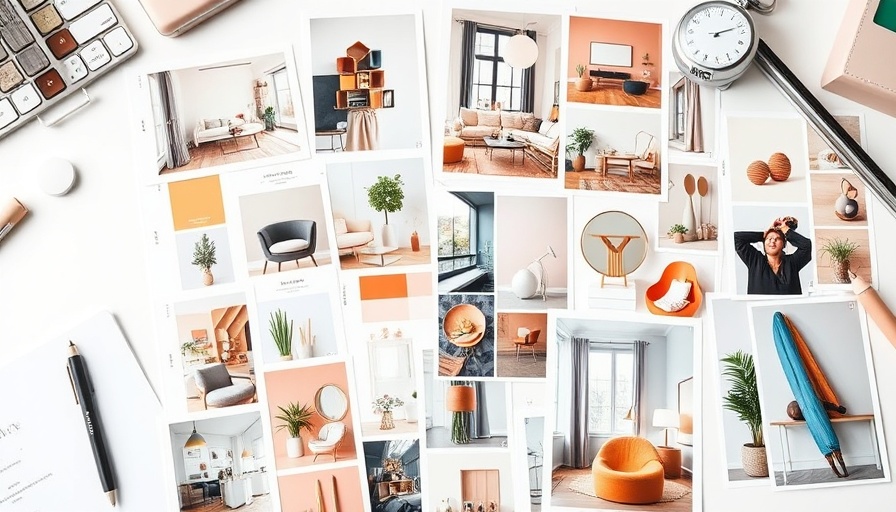
Unleash Your Inner Designer: Creating Intentional Spaces
Home styling is more than just arranging furniture or painting walls; it’s about crafting an environment that resonates with your personality and lifestyle. Whether you're a homeowner or a business owner looking to elevate your space, the principles of professional interior design can guide you towards achieving a carefully curated aesthetic.
Begin With Visualization: The Planning Stage
Before making any purchases, it’s essential to establish a vision for your space. As the professionals do, take the time to envision how you want each room to function and what emotional response you want to evoke. Create a mood board using images and textures that inspire you. This foundational step ensures that your space will feel harmonious and intentional, rather than haphazardly decorated.
Layering: The Key to Depth and Interest
A well-styled home invites exploration through its layers. Professional designers master the art of layering by combining various textures, materials, and finishes. Incorporate soft fabrics against hard surfaces and mix finishes to create dynamic visual and tactile experiences. Here, layering isn’t just about aesthetics; it infuses your space with life and personality.
Understanding Negative Space: The Power of Breathing Room
Negative space is a design element that often goes unnoticed. It involves strategically leaving areas empty to create a sense of calm and focus. By intentionally allowing space around key features or decor items, you draw the eye to what truly matters in the room, ensuring a balanced look that feels polished rather than cluttered.
The 70/30 Color Rule: Achieving Balance in Hues
Color can dramatically alter the mood of a room. To maintain a cohesive and inviting atmosphere, employ the 70/30 color rule: allocate 70% of your space to neutral tones and restrict your accents to just 30%. This method provides a visually appealing balance, allowing color to pop without overwhelming the senses.
Establishing a Focal Point: Centering Your Design
Every room benefits from a focal point, whether it's a striking piece of artwork or a bold furniture statement. This centerpiece anchors the room and serves as the foundation upon which you build your surrounding decor. Arrange your other elements to complement the focal point, ensuring they don’t compete but rather enhance the overall aesthetic.
Curate and Edit: Refining Your Space
Just as important as styling is the act of editing. Professionals know that sometimes less is more. After styling a space, take a step back and see what can be removed. Strive for a curated environment filled with only your favorite elements. This approach can lead to a more serene ambiance, allowing each item to speak for itself.
Cohesion Through Repetition: Creating a Unified Look
As noted in other expert perspectives, achieving a cohesive look throughout your home can be accomplished by repeating certain elements. This could mean using a consistent color palette across rooms or repeating textures and materials. When spaces feel connected through shared features, it evokes a sense of belonging and flow across the home.
Embrace Your Unique Taste: Personalize Your Design
While following design rules can help achieve a professionally styled look, don’t forget the importance of personal expression. Let your house tell your story by incorporating pieces that reflect your interests and history. Unique artifacts or artworks can provide warmth and a personal touch to your interior.
Conclusion: Your Space, Your Style
Transforming your home into a stylish representation of your personality is entirely achievable, even without formal training. By following these strategies, from planning and layering to establishing focal points and embracing negative space, you can create a living environment that feels both polished and authentically yours. Ready to embark on your design journey? Start today and see how your space evolves into a reflection of who you are.
 Add Row
Add Row  Add
Add 




Write A Comment